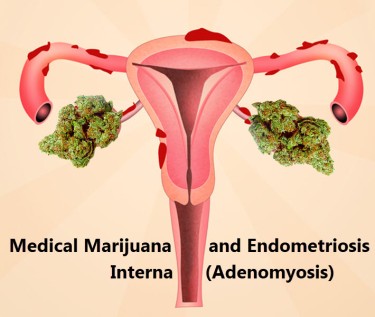
Cannabis for Pelvic Pain and Inflammation
Pelvic pain, a general term that refers to pain in the reproductive area, can affect both men and women.
There are many reasons why pelvic pain can occur. These can be due to an infection, endometriosis, pain in the pelvic bones, problems in the colon or bladder, or even problems with some of the reproductive organs like the ovaries, uterus, or fallopian tubes. Other possible causes of pelvic pain include appendicitis, kidney infection, testicular disease, bladder disease, or bowel disease.
Various treatment options are available depending on the cause and condition of pelvic pain, but studies show that cannabis can help.
How hemp helps
The endocannabinoid system is an incredible network of receptors around the body that help regulate numerous functions. The reproductive system, particularly that of women, has a high concentration of receptors, which is why so many women find relief from a variety of pelvic and reproductive ailments when using cannabis.
The two primary cannabinoids in the plant are THC (tetrahydrocannabinol) and CBD (cannabidiol). They work in different ways to treat pain in the body; For example, THC stimulates cannabinoid receptors in the brain, which then activate the reward system and reduce our perception of pain. However, THC is psychoactive and induces a high — which some people enjoy while others don’t. On the other hand, CBD doesn’t make you feel high, but it still works as a pain reliever by activating pain receptors in the brain for pain relief while reducing inflammation.
Cannabis for Pelvic Pain: What the Studies Say
A 2021 study conducted by researchers at the University of Michigan Department of Obstetrics and Gynecology analyzed 1,382 women with chronic pelvic pain and fibromyalgia and their CBD consumption patterns. More than a third of women reported current CBD users, and 81% of them reported an improvement in their pain due to CBD. Meanwhile, 76% said they use CBD instead of other medications like benzodiazepines, opioids, and NSAIDs; They reported benefits for depression, anxiety, sleep, and overall health after using CBD.
A 2020 study also found similar results. Mayo Clinic researchers surveyed 113 Florida women suffering from pelvic and perineal pain. The results, published in the medical journal Journal of Women’s Health, showed that over 20% of the subjects were self-identified cannabis users. Of this cohort, 96% reported benefits in at least one symptom, including trouble sleeping, cramps, and pain.
“To our knowledge, this is the first study in the United States to examine the prevalence of cannabis use in women with CPP [chronic pelvic pain]. Our results show that a clinically significant percentage of women use cannabis in addition to or as an alternative to traditional therapy for chronic pain,” the authors report. “Consumers reported that cannabis improved CPP-related symptoms, reduced dependency on the healthcare system, and helped reduce opioid drug use. Our results provide important additional evidence, and we hope to pave the way for acceptance and consideration of cannabis as a therapeutic option for patients with debilitating pain to improve their quality of life,” the authors concluded.
Cannabis also helps patients with endometriosis, the main cause of pelvic pain. A 2020 New Zealand study analyzed medical cannabis users suffering from either polycystic ovary syndrome (PCOS) or endometriosis. The participants used herbal cannabis, although it was not yet legal for medicinal use in New Zealand at the time of the study.
Respondents were asked to rate the effects of cannabis on a scale from zero to 100. Almost 6 in 10 respondents said they were able to stop taking prescription medication after using cannabis through inhalation. They were also able to completely stop taking opioids, which are sometimes prescribed for pain of any kind that was already severe—despite the dangers of opioids.
“Cannabis, most commonly inhaled via a pipe, joint, or bong, was found by our respondents with endometriosis and/or PCOS to be very effective for managing their symptoms, particularly those related to pain, sleep, and gastrointestinal issues. symptoms,” she told the study authors. “Respondents reported clear evidence of a substitution effect, with cannabis use reducing or replacing other pharmaceutical drugs, particularly in relation to opioid-based analgesics and also other drugs commonly used to treat endometriosis-related symptoms,” so the authors added.
“Self-reported community data like this adds to the growing body of evidence that medical cannabis can be a potentially effective part of a multidisciplinary toolbox to manage the symptoms of endometriosis and to help reduce other classes of drugs, including opioids,” the concluded authors.
Conclusion
A growing body of research is demonstrating the benefits of marijuana for treating dozens of pain-related ailments. It has saved countless lives, especially for people who have managed to get off dangerous, deadly, and addictive opioids.
Despite this, marijuana is just as effective or even better than opioids when it comes to pain relief. Depending on the type of cannabis you are treating yourself with, always do so with caution. For example, treatment with THC-rich products may cause you to experience the plant’s psychoactive effects, depending on how potent the contents of your drug can be. If you don’t want to experience a high, you better take CBD products. Always talk to your doctor before treating yourself, especially if your condition is severe.
CANNABIS AND PELVIC PROBLEMS, READ MORE…

MEDICAL MARIJUANA FOR ENDOMETRIOSIS, READ MORE!

Post a comment: